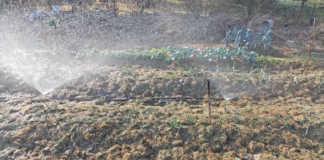
Gibberella or red ear rot is caused by fungi belonging to the Fusarium graminearum species, which also causes root rot, crown rot, stalk rot and seedling blight of maize.
Symptoms include reddish kernel discolouration, usually beginning at the ear tip. Husks may rot and become cemented to the ear.
Life cycle
The fungus survives winter mainly on the surface of maize stubble. It can also survive in the soil or on lucerne and grass cover crops.
This explains the presence of red ear and stalk rot on lands that have been cropped to ‘non-hosts’ for several years.
Air currents transmit spores onto maize stubble. Spores infect the maize silks and grow down into the tip of the ear.
Cool, wet weather within three weeks of silking favours red ear rot. Regions affected by sporadic outbreaks are generally KwaZulu-Natal and Mpumalanga, as well as irrigated lands in Limpopo and North West.
Increasing economic importance
Although red ear rot is not as economically important in South Africa as Fusarium ear rot (see previous issue), it appears to be on the increase, and may, in time, become the most significant ear rot in the country.
Although infection severely reduces yield and quality, the main concern is toxicity. F. boothii, one of the species that causes red ear rot in South Africa, is known to produce several toxins that cause a major problem for pig farmers.
Signs of poisoning in pigs range from a refusal to eat to reduced reproductive performance, as seen in an enlarged uterus and mammary glands, and shrunken ovaries.
Maize with more than 5% infected kernels must be kept out of pig rations, or mixed with sufficient first-grade maize.
Cattle seem to be more resistant, and chickens do not appear to be affected at all.
Control measures
Rotate crops
Pathogens colonise alternate crop and survive in organic matter in or on top of the soil. Rather avoid rotation with a known host crop.
Remove stubble
Removing maize residue will reduce disease incidence the following season. Producing maize in conservation agriculture (CA) cropping systems requires stubble retention.
This can increase the risk of maize ear rot. But rotating crops, in any case recommended as standard practice in CA, will reduce this risk.
Sources: Flett B & Ncube, E: ‘Ear rots of maize: a continuous threat to food safety and security’ (ARC-Grain Crops Institute); ‘Ear rot diseases of corn’.













